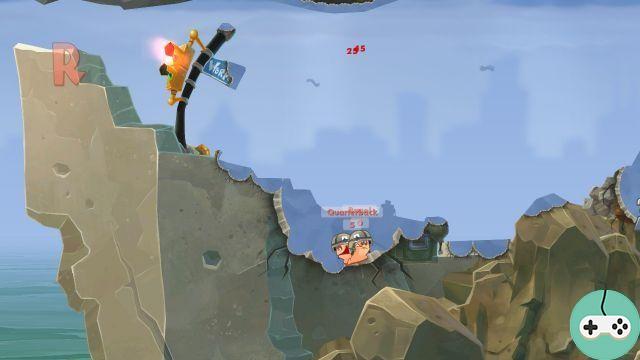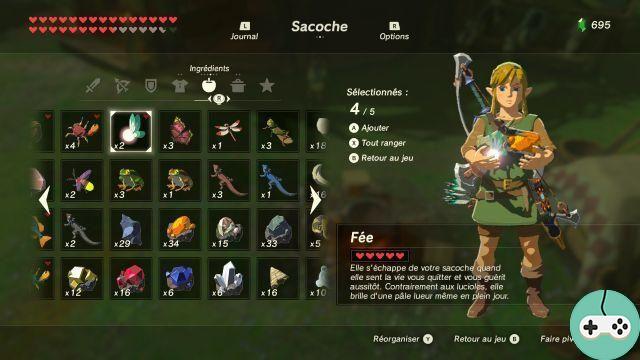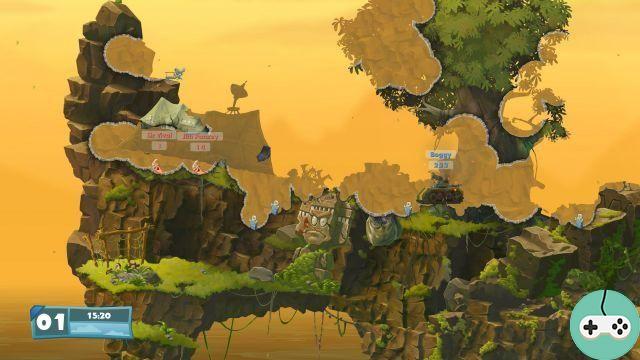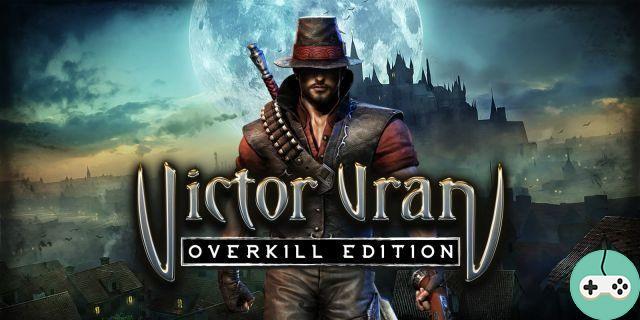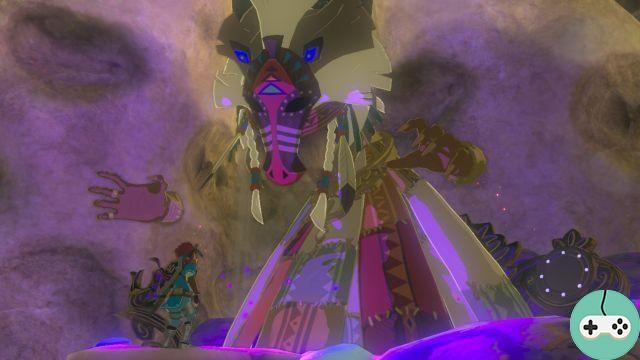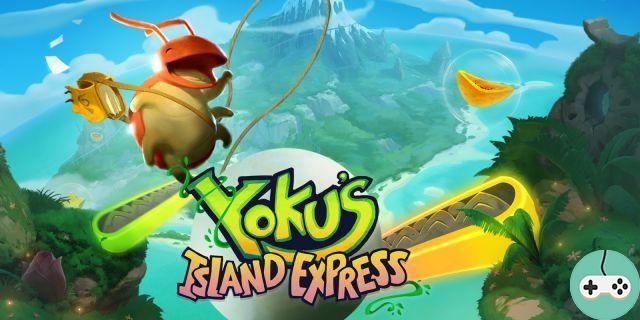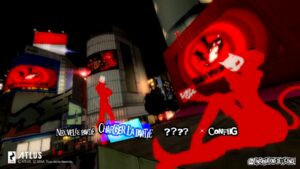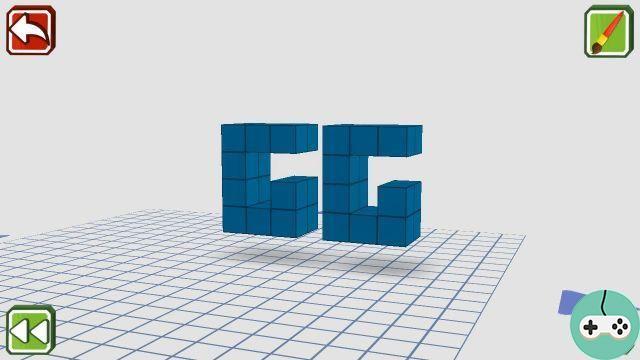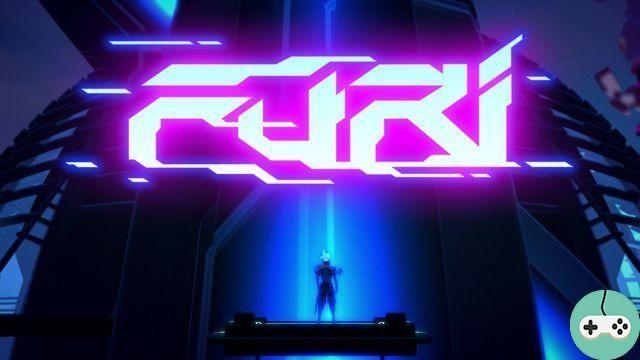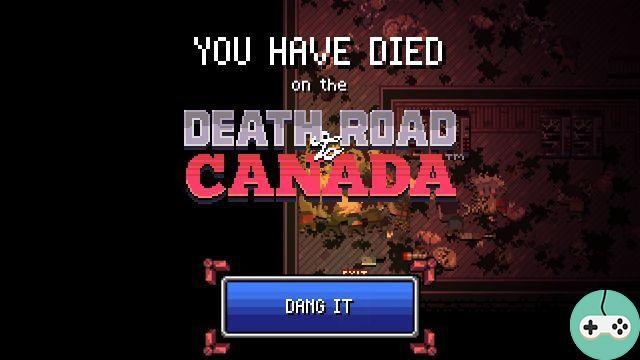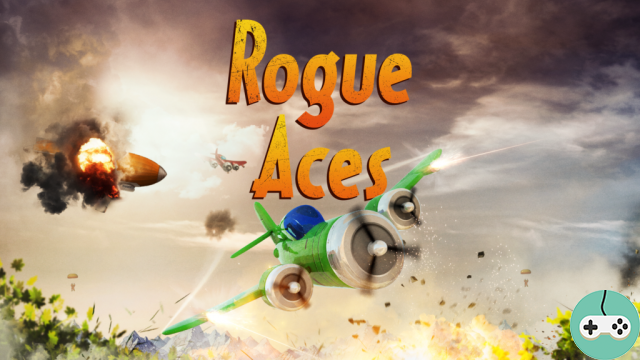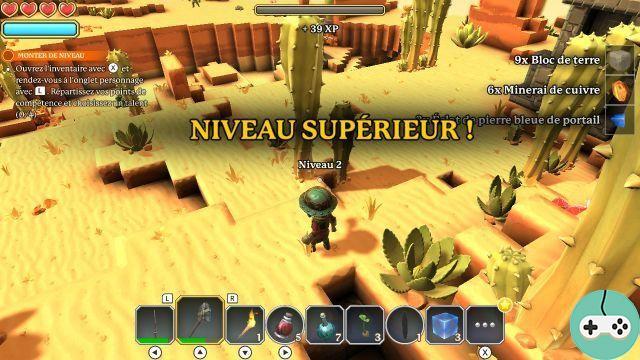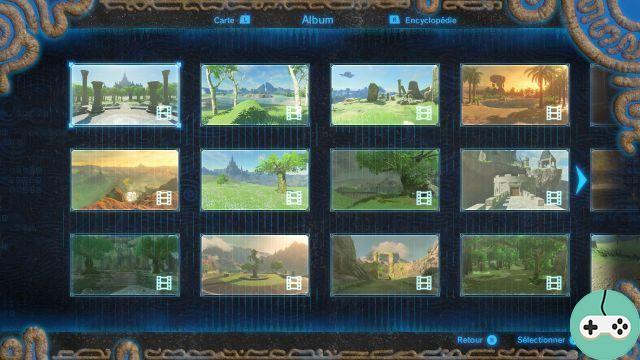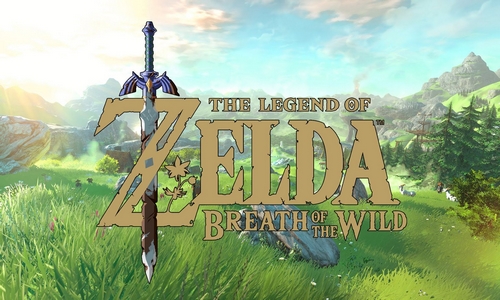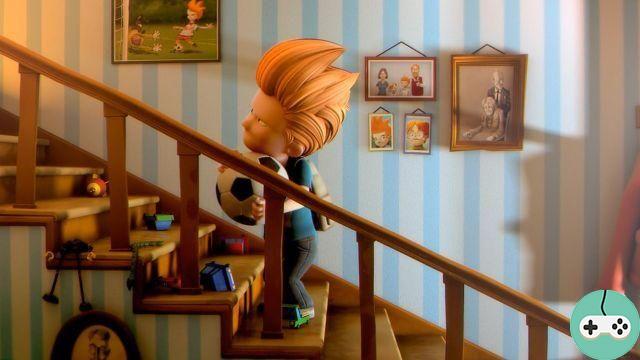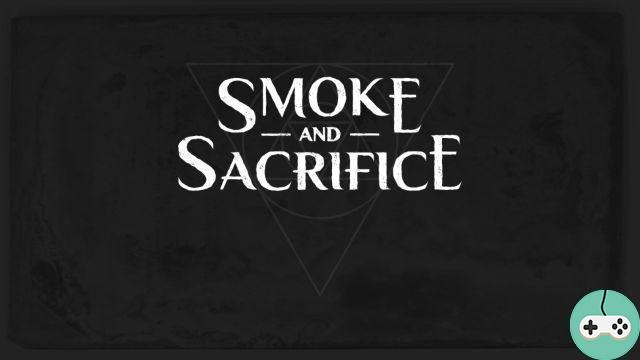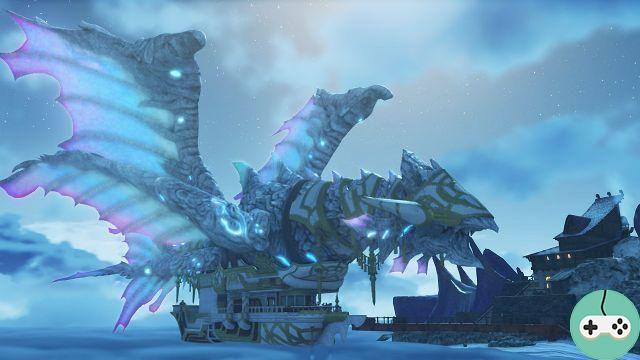
Xenoblade Chronicles 2 is a J-RPG developed by Monolith Soft and published by Nintendo, released on December 1, 2017 on Switch.
The history
Mankind lived at the time at the top of the immense World Tree at Elysium, but was banished and sent to Alrest, a land completely covered with a sea of clouds, by the Architect, the creator of the world, following an unknown event. But as humanity was on the verge of extinction, the Architect took pity and sent the Titans of Elysium to Alrest so that the remaining humans could find refuge and survive.
Thousands of years have passed, humans have lived all this time on the backs of the Titans, but the Titans are not eternal and some, including the larger (and most populous), are slowly starting to die and eventually , risk bringing with them the end of all humanity. This leads to many political tensions and wars between different nations each living on different Titans.
It is in this world on the edge of the abyss that we find ourselves at the helm of Rex, a young man living on the back of his "grandfather", a "little" Titan. The latter is a recuperator, a person diving into the sea of clouds in order to bring up treasures that have sunk there.



Difficult to say more without spoiler. The Xenoblade Chronicles 2 storyline is really addicting. The latter develops well throughout and offers virtually no downtime, or “useless” interlude serving as filler as we regularly find in RPGs. The scenario addresses many themes throughout the adventure, such as war, ecology, history, evolution, the arms race, technological evolution, immortality and many more. other "serious" subjects.
The game also offers “lighter” moments, with humor. If you are used to J-RPGs such as the Tales Of series for example, you will not be disoriented by the type of humor that Xenoblade Chronicles 2 offers. “Specific” and “Japanese”, such as funny situations like this, come across a closet full of school uniforms. However, the humor is very quickly eclipsed by the more serious tone of the script and the “Japanese” type of humor is very rare (3-4 scenes throughout the adventure.)






The story is quite long and even in a straight line, it takes at least fifty hours to get through.
It is not necessary to have done the previous games to fully enjoy Xenoblade Chronicles 2. You don't risk being left “unanswered” or missing important elements if you haven't done the previous ones. The only things you are likely to miss are two / three small references here and there, nothing important or consequential.
The game and its gameplay
Xenoblade Chronicles 2 is a huge game, both in its world and the activities (quests, etc.) and in its gameplay. Besides, let's start with the latter.
The gameplay of Xenobalde Chronicles 2 seems easy at first glance, but is very rich and technical. For starters, be aware that unlike most J-RPGs, battles will take place directly in the world and not in an "arena" or "combat zone". Thus, this allows you to fight and / or escape without the slightest transition, to be able to chain them without pause, but above all, there are the elements of the decor to take into account and the risk of attracting a whole bunch of others. enemies!
For the elements of the scenery, fighting around a boulder can be annoying, as you will not see the target, just as fighting on the edge of a precipice or on a bridge is also very dangerous, as you can be thrown into the void. . Fortunately, it is possible to do the same with your enemies, but you will lose the rewards (difficult to pick them up when they are several hundred meters below: D).


The adventure therefore puts us in control of Rex who is a pilot and is in command of blades. The blades are kinds of permanent summons that give you not only a weapon, but also skills and attacks. There are an infinity of common blades and about fifty rare blades (which are the most powerful, it goes without saying). Each pilot can have 3 blades assigned at the same time (but have many more, in case you want to change them). The blades also have roles, namely "attacker", "tank" or "healer". This influences the Pilot and Blade Arts that they will offer (I will come back to these Arts a little later in the overview!) And are also linked to a specific element (Fire, water, ice, electricity, earth, wind , light and darkness).
The team is therefore composed of three pilots (Rex, and others, whose name I will keep quiet to avoid spoiling) who can each have up to 3 blades. You won't have to control all this little world, only the pilot you choose to control (Rex by default, but you can take control of any!). The only thing you will have to control for your teammates is to have them attack a specific enemy or else to trigger Blade Arts for blade combos.




But where it's most interesting is the combat system. I'm going to make a “condensed” version of it, but for those interested, you can read the detailed version by opening the drop-down menu just below!
The detailed combat system
The latter is really very interesting, technical and tactical even if at first glance, one might think that it is simple. First of all, basic attacks are carried out automatically when in combat and within range of the target enemy. It might sound "rubbish" and not interesting, but the rest of the combat system is so huge that you won't have time to deal with basic attacks.
All of this self-attacks have a cycle of 3 shots, all more powerful than the previous one. To do this, however, you must stay still, because the character will not attack while moving. They are however very important, because it is via the self-attacks that the Arts (the skills) are charged! And it is these attacks that do the most damage in combat.

The arts of pilots are therefore attacks specific to the weapon you are using (sword, lance, hammer, ether cannon, fist weapon, etc.) Each weapon has 4 arts, but only 3 are usable, so you have to make a following choice your playstyle. Do you prefer to do medium damage, but inflict state ailments or rather do very large direct damage, but without ailments? It's up to you.
You will, for example, have an Art that will do medium damage, but will knock down the enemy, thus preventing them from attacking and receiving more damage and, alongside, you will have an Art that will have no effect. , but will do very heavy damage with each hit, regardless of the enemy's condition. Some will do + 50% damage if you attack from the side, others will drop potions to heal you, others will only attack a single target, others will allow multiple hits. , etc. In short, you have a lot of choice!
All the Arts are more or less equal depending on how you play, and it is strongly recommended to place yourself correctly, even if it means losing 1 or 2 auto-attacks, in order to place an Art correctly (increased damage if you hit the back for example). Also note that if you use a Pilot Art when your auto-attack is supposed to do damage, you will perform a feint, which will replace the auto-attack with Pilot Art and do more damage!

But that's not all, because these Arts will allow, like the self-attack, to charge another attack, the Blade arts. These have 4 levels and are linked to the blade (not the weapon) you are using. These attacks do damage and / or effects related to the blade element and are very powerful. When you cast a Blade Art you will have a small QTE to perform and the more you succeed the more damage you will do.
As said above, there are 4 levels. The first three levels are loaded thanks to the Pilot Arts, the fourth will only load if the agreement with your blade is at the maximum. Each level is more powerful than the last, but will have different effects and attacks. So sometimes it will be worthwhile to wait and use Level 2 Art rather than Level 1, just as sometimes it can be useful to use Level 2 rather than Level 3.

But that's still not all! Because Blade Arts can trigger Blade Combos! (when I told you that you wouldn't have time to deal with basic attacks!)
Blade combos are Blade Art chains that all characters on your team can do. As soon as you cast a Blade Art, a “combo tree” will appear in a corner of the screen. There are three levels, the last allowing to launch a big attack and to apply a seal on the enemy, blocking one of his attacks and applying an elemental orb (I come back to this a little lower!). Once your first Blade Art has been launched and the “combo tree” appears, you will then have to make a choice for the first branch.
You can either use one of your Blade Arts or have one of your teammates use theirs, and the same for the last branch. Each branch will, however, require the use of a Blade Art of the level of the branch in question. For example, to trigger the blade combo, a level 1 blade art is sufficient, however, you will need to cast a level 2 blade art in order to pass the first branch and you will need to use a level 3 blade art to buckle the blade combo.
Blade combos are element-bound. Thus, you will not have the same branches or the same effects depending on whether you trigger it with a Blade Art of the Fire Element or the Light Element.

Blade combos therefore allow you to do extreme damage, while being able to apply many penalties to the enemy, but also and above all, apply seal and orb ! Seals are used to “lock” an enemy attack or ability. The orb appears at the same time and is linked to the item used to complete the combo. This ball will reduce the damage related to the element in question suffered by enemies, making it more resistant. But in return, it will allow you to do more damage with the chains (yes yes, another new trick!)
The sequences are the ultimate, most powerful combo out there. For this, the chain bar must be completely filled (which is done little by little, as the attacks, combo, etc.). Once the bar is full, you can launch it and thanks to that, you will be able to chain blade arts of all your characters. And if the enemy has one or more orbs, once the first chain, you will be able to chain with a second, and so on as long as there are orbs and you manage to destroy them. To destroy them, it will be necessary to launch blade arts of the opposite element to that of the orbs present on the enemy. You can throw from an element that is not contrary, but that will only crack the orb, not break it.
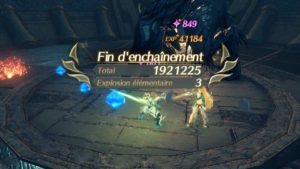

And finally, the very last thing to do in combat, driver combos. (I repeat, we really don't have time to deal with basic attacks hehe!) These require effects to be applied to enemies. If you manage to chain them in the right order (imbalance> fall> Ejection> Concussion), this will grant some additional bonuses, such as saving time for your blade combo, the enemy being slowed down, etc. .

That's all for the combat side! As I said at the very beginning, the combat system can seem "basic" at the beginning (in particular because of the blow of the "self-attacks"), but it is very technical and above all, tactical! Fortunately, once the controller is in hand, everything comes "naturally" after a few hours.
The combat system being, as I have already said, very technical and tactical, the game is revealed little by little and gradually unlocks all the combat possibilities. The first thing to know is that "basic" attacks are performed in a automatic. It might sound strange, even "silly", but considering all there is to do next to it, it's a very good thing.
Indeed, these automatic attacks make it possible to charge Pilot Arts, which are the hits that will ultimately do your primary damage and depend on the weapon you have equipped (weapon that is linked to the blade). These are then used to load the Blade arts, which are big attacks doing significant damage and are, in turn, related to the blades themselves as well as the blade element. Blade arts have multiple levels (4 in total) and each level will do different damage and effects.
It is through these Blade Arts that you can trigger lick combos, which allow you to make very powerful combos on your enemies. There are other attacks and abilities that I invite you to discover in the section “the detailed combat system” just above.
Now, let's talk about the rest of the game (and there are things to say!)
Like any good self-respecting J-RPG, the game is filled with ancillary content. Thus, there is a myriad of side quests, linked to NPCs, but also to blades, which allows them to evolve. The quests range from the classic and eternal "Go get me 10 potatoes" or "Go kill 3 gloubigoulba", but there are quests a little longer and can even be solved in different ways.


But one of the most important ancillary elements remains the city development. Indeed, each city can be developed and has 5 levels. The development of cities not only reduces the purchase price of items, but also, and above all, to be able to unlock new items to buy! And, more importantly, it also makes it possible, in the long term, to buy said stores, which grants very large bonuses. Bonuses like increasing speed, increasing the number of items you can wear, etc. In short, very significant bonuses!




One of the other very important ancillary elements, which is also closely linked to the development of cities, is the mercenary management. During the adventure, it will be possible to send your blades to carry out missions. There are a lot of missions that allow you to do side quests, blade quests, develop towns, unlock shops, etc. It also improves friendship with your blades and also unlocks skills for them etc.
The missions can vary in duration, it goes from 15 minutes to 2 hours or more. Time relates to the game and not to "real time". Thus, you will have to play for 2 hours for the mission to end, it will not be possible to put the console on standby, go to a movie and restart the game to finish it.




There are, of course, a bunch of other side activities, most of which don't even have "tracking" and / or are hidden. Such as mini games for example.

Now that we have talked about all this, let's move on to world itself. The latter is simply gigantic! Indeed, as said in the “history” part, humans live on Titans, at least enormous animals on which entire cities and an entire ecosystem exist. These take a lot of time to be covered and above all, it will be impossible for you to visit all of them from your first visit. This is mainly due to the fact that the levels of the enemies are very varied.
Indeed, you have areas with level 10 enemies and right next to them, areas with level 30-40 enemies, or even 60-80. Certain elements of the scenery can also block you and the only way to cross them is by developing your blades and their secondary abilities (being able to burn the elements of the scenery, making big jumps, breaking barriers of darkness, etc.).






The world is therefore swarming with enemies, but also with secrets, chests, items to collect, etc. In addition, each place is suitable for sheltering a secret passage, a path leading to a secret area, or even a “normal” area! In short, exploration is an element that takes an important place in the world of Xenoblade.
So all this makes the game is extremely rich. Besides, side lifetime, it will take a long time to overcome it. By only doing the main story in a straight line, count at least fifty hours. If you are aiming for 100%, in this case, it will take you more than 120 hours! For my part, by doing a few side activities (explorations, side quests, etc.) and doing the main story in full, I took 89 hours to get to the end. Knowing that I still had a lot of side quests to complete, blade quests and, moreover, once the main quest is completed, new things are available in the game (new bosses to fight, quests, etc.).
Graphics, sound and optimization
Let's start with the graphics and most importantly, let's shed some light and restore the truth. Indeed, we can read a bit of everything and anything on the net about this Xenoblade Chronicles 2, such as the resolution that drops to 240 p, the game that yo-yo between 10 and 15 FPS, and other nonsense of the kind. To begin, the game is running at 720 p in dock and nomadic mode. However, even if in dock mode, the resolution remains at 720p, in nomadic mode, Xenoblade Chronicles 2 has a dynamic resolution. This means that in case of performance concern, the resolution may decrease to compensate. Here are some comparison images in dock mode and nomad mode:
 Dock
Dock
 Nomadic
Nomadic
 Dock
Dock
 Nomadic
Nomadic
 Dock
Dock
 Nomadic
Nomadic
 Dock
Dock
 Nomadic
Nomadic
On the IPS side, the game is running 30IPS stable. The game had performance issues when it was released, but the same-day update fixed them. The game has a very successful artistic direction and the game offers us very beautiful panoramas.












Now let's move on to sounds and music. The OST is simply sublime, like what almost all J-RPGs offer. In addition, they adhere wonderfully to the events and the atmosphere of the place. On the voice side, we have the choice between English voices and Japanese voices (to be recovered for free in the form of DLC in the eshop). For my part, I have a preference for Japanese voices, especially because the voices stick much better to the characters, where in VA, we end up with adult voices on children, and vice versa. In addition, in VA, lip synchronization is very poor (movement of the lips that match the voices), which means that we often end up with lips that move when no one is speaking, or the reverse. : lips not moving while there are dialogues. And lastly, the VA suffers from sound problems that sometimes causes the vocals to be very weak, while the music is extremely loud.
And to finish, optimization. As said above, the game suffered from some minor IPS stability issues, but this has been fixed in an update. For my part, I played for many hours (over a hundred) and I played almost as much in dock mode as on the go and I did not feel any problem or discomfort, either in the one or the other mode. The dynamic resolution (effective in nomadic mode) was hardly felt and I have never been bothered by it, moreover, it is hardly seen, except in rare situations such as large panoramas with lots of details (see screens above). But during the rest of the game (combat, exploration, in town, in dungeon, etc.), no worries.
Conclusion
Xenoblade Chronicles 2 is THE J-RPG of the year for me, and a must-own game in its Switch library! The first few hours can be a bit boring, because they serve as a tutorial (especially for the combat system), but once you are finally "free", it is only happiness! The lifespan is simply colossal, offering more than a hundred hours of play, or even more! Personally, I have 118 hours of play on it and I still have not finished all of what the game offers. On the replayability side, a New Game + is planned, but not yet implemented at the time of writing these lines.
In short, if you like J-RPGs, buy it! You will not regret it ! This is one of the must-have games to own on the Switch for any role-playing fan.




